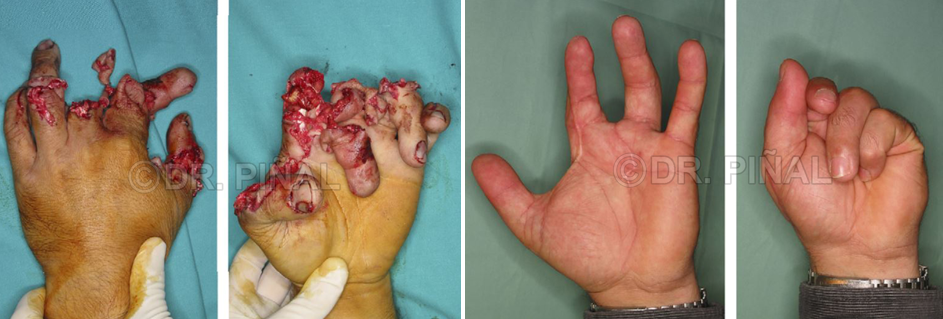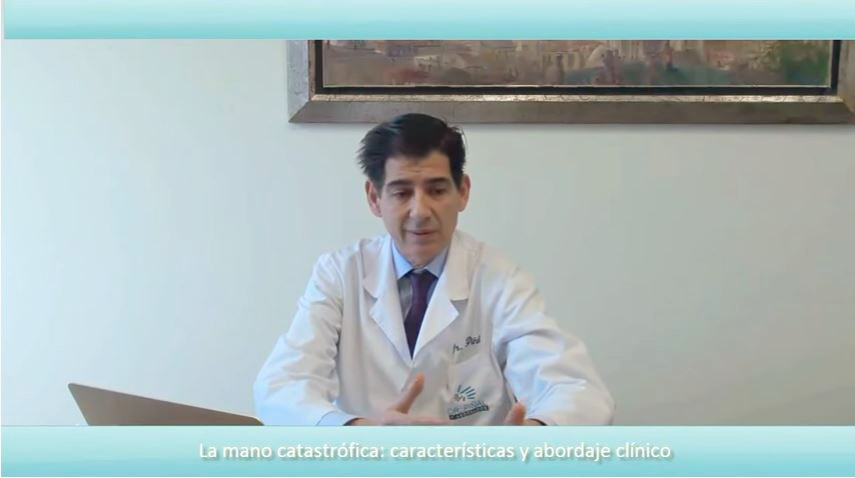您可以阅读下面手动翻译成英文的翻译。 您还可以通过单击右上角的徽标访问原始西班牙语。 通过此链接,您可以使用简体中文访问自动翻译的Google版本: http://bit.ly/2KG6h3I
There is no narrow definition of catastrophic hand, but with these couple of terms we describe an upper limb with limited functionality, bone malunions and aesthetical damages (mutilations and amputations, for example) after severe trauma.
A fourth factor is to be added to the forementioned three, a key one also: the contextual perception of the patient, depending on such variables as their pre-injury occupation, the psychological resilience in order to face it, etc.

In this clinical scenario of great complexity, the surgeon Francisco del Pinal is an international benchmark both on research and development of new surgical techniques, and on their implementation in the operating room.
His article ‘Severe mutilating injuries to the hand: guidelines for organizing the chaos’ is still the guiding line in the microsurgical approach to such cases; almost a decade after its publication in 2007 by the Journal of Plastic, Reconstructive & Aesthetic Surgery, official journal of the British Association of Plastic, Reconstructive and Aesthetic Surgeons (BAPRAS) and the European Association of Plastic Surgeons (EURAPS).
According to Del Piñal, in contexts of catastrophic hand the starting point before surgery must be “saving the salvageable, giving priority to basic structures such as joints or flexor tendons, without losing view of the aesthetic factor, the final appearance of the limb, which is inseparable from the functional outcomes“.
From their perspective, the work of early intervention teams is key, so afterwards this first contact the case is referred to physicians and teams capable to perform the microsurgical techniques that nowadays offer hope to patients with extremely limiting departure situations
Dr. Del Piñal offers the general fundamentals of this profile of trauma in this new blog post (OV).
Additional references:
 es
es en
en fr
fr it
it ru
ru zh-hans
zh-hans
